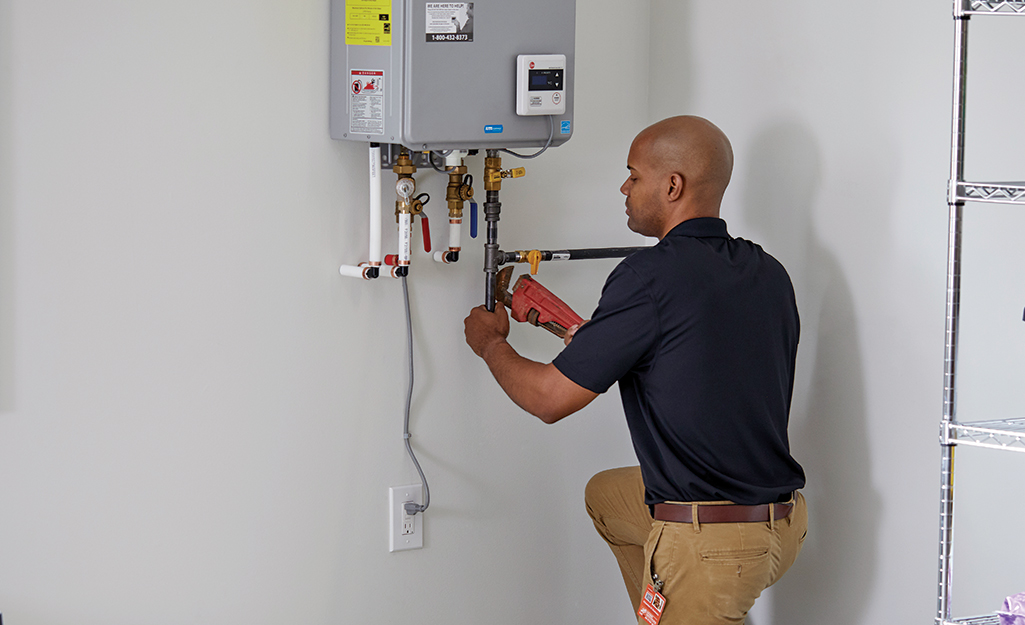Effective Techniques for Caring for Your Home's Hot Water SystemBest Practices for Caring for Your Home's Hot Water System
Effective Techniques for Caring for Your Home's Hot Water SystemBest Practices for Caring for Your Home's Hot Water System
Blog Article
Are you currently searching for critical information about How to Maintain Your Water Heater & Prolong its Life?

Hot water is crucial for everyday convenience, whether it's for a rejuvenating shower or washing recipes. To ensure your warm water system runs efficiently and lasts much longer, regular upkeep is key. This article supplies useful tips and insights on just how to preserve your home's warm water system to prevent disruptions and pricey repair work.
Introduction
Maintaining your home's warm water system might appear challenging, yet with a few simple actions, you can ensure it runs smoothly for years to find. This guide covers whatever from understanding your warm water system to DIY upkeep ideas and knowing when to employ specialist assistance.
Relevance of Preserving Your Warm Water System
Regular upkeep not just expands the life expectancy of your warm water system but likewise ensures it operates successfully. Overlooking maintenance can result in lowered efficiency, greater power bills, and also early failure of the system.
Indications Your Warm Water System Demands Upkeep
Understanding when your warm water system requires attention can stop major issues. Watch out for indicators such as inconsistent water temperature level, weird noises from the heating unit, or corroded water.
Flushing the Water Heater
Flushing your hot water heater removes sediment accumulation, enhancing performance and prolonging its life.
Checking and Changing Anode Rods
Anode rods stop deterioration inside the tank. Evaluating and changing them when worn is critical.
Complicated Problems Needing Professional Aid
Examples consist of significant leaks, electric issues, or if your hot water heater is constantly underperforming.
Regular Professional Maintenance Advantages
Expert upkeep can consist of thorough inspections, tune-ups, and making sure compliance with safety standards.
Examining and Adjusting Temperature Settings
Adjusting the temperature settings guarantees ideal efficiency and safety.
Do It Yourself Tips for Upkeep
You can execute several maintenance tasks yourself to keep your hot water system in top condition.
Looking for Leakages
On a regular basis check pipelines and links for leaks, as these can cause water damages and higher expenses.
Recognizing Your Warm Water System
Prior to diving right into upkeep jobs, it's practical to comprehend the fundamental elements of your hot water system. Commonly, this consists of the hot water heater itself, pipelines, anode rods, and temperature controls.
Monthly Maintenance Tasks
Regular month-to-month checks can assist catch minor concerns prior to they intensify.
Evaluating Pressure Alleviation Valves
Evaluating the pressure safety valve ensures it functions correctly and protects against too much stress build-up.
Insulating Pipelines
Protecting hot water pipes lowers warmth loss and can save energy.
When to Call a Professional
While DIY upkeep is helpful, some problems call for specialist competence.
Final thought
Regular maintenance of your home's hot water system is crucial for performance, longevity, and price financial savings. By complying with these tips and recognizing when to seek specialist assistance, you can guarantee a reliable supply of warm water without unexpected disturbances.
How to Maintain an Instant Hot Water Heater
Before tinkering with your hot water heater, make sure that it’s not powered on. You also have to turn off the main circuit breaker and shut off the main gas line to prevent accidents. Also turn off the water valves connected to your unit to prevent water from flowing into and out of the appliance. 2. When you’re done, you have to detach the purge valves’ caps. These look like the letter “T” and are situated on either side of the water valves. Doing so will release any pressure that has accumulated inside the valves while at the same time avoid hot water from shooting out and burning your skin. 3. When the purge valves’ caps are removed, you have to connect your hosing lines to the valves. Your unit should have come with three hoses but if it didn’t, you can purchase these things from any hardware or home repair shops. You can also get them from retail stores that sell water heating systems. Read the user’s manual and follow it to complete this task properly. When the hosing lines are connected, open the purge port’s valves. 4. You should never use harsh chemical cleaners or solutions when cleaning your unit. Make use of white vinegar instead. It should be undiluted and you’ll probably use about 2 gallons. 5. Now flush your water heater. This task should probably take about 40 minutes. We can’t give you specific directions for this because the procedure is carried out depending on the type, model and brand of your heater. With that being said, refer to the user’s manual. 6. When you’re done draining the unit, you have to turn off the purge port valves again. Remove the hosing lines that you earlier installed on each of the water valves. Put the valve caps (purge port) back in their respective places and be very careful so as not to damage the rubber discs that are found inside these caps. 7. Now that everything’s back in place, check your user’s manual again to find out how to reactivate your water heating system. 8. Once it is working, turn one of your hot water faucets on just to let air pass through the heater’s water supply pipes. Leave the tap on until water flows smoothly out of it. https://www.orrplumbing.com/blog/2014/september/how-to-maintain-an-instant-hot-water-heater/

I discovered that article on Tips on Maintaining a Water Heater while doing a lookup on the web. Do you know about somebody else who is sincerely interested in the subject? Feel free to share it. Thanks so much for going through it.
Quote Report this page